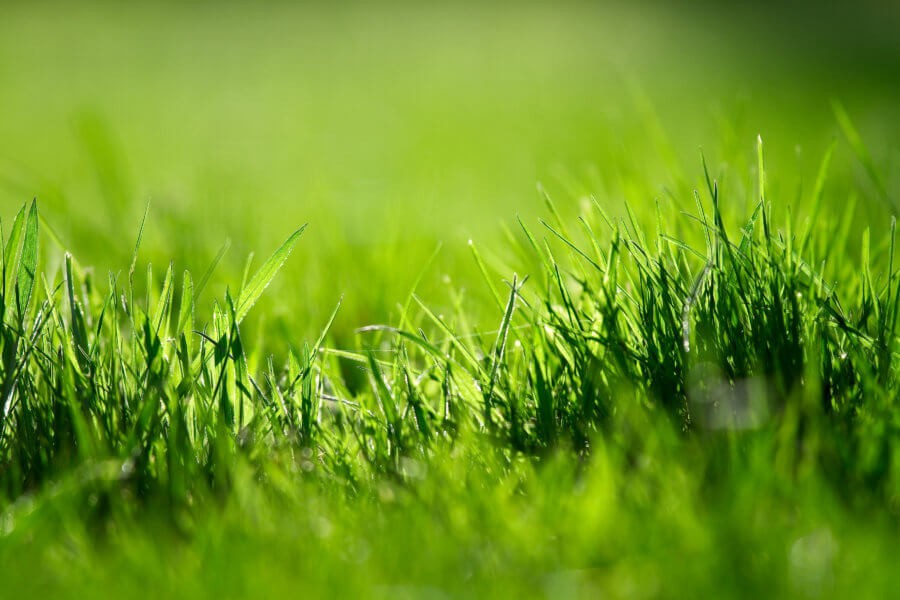
Use CitraBlue: How Shade Affects Southern Turfgrass
Lying in the grass in a shady spot is one of the great pleasures of summer life here in Florida, giving you a respite from the heat while allowing you to reconnect with nature. However, not all grass types grow well in the shade, with some struggling more than others. CitraBlue is a variation of St. Augustine sod that thrives in shady environments, as well as sunny. Here’s what you need to know about how shade affects your lawn and why CitraBlue is the best solution.
The Impact of Shade and Sunlight
Grass, like all plants, needs sunlight in order to extract nutrients during photosynthesis. That doesn’t mean that it requires full sun throughout the day, though. Some shade over your lawn can be beneficial, as it can protect the grass from midday heat and sun so that it doesn’t dry out as quickly. This gives your lawn more time to soak up water from the soil before it evaporates in the heat.
Of course, it won’t be possible for any type of grass, even those that are shade-tolerant, to grow without any sunlight. Areas that are fully shaded will never be able to support grass. However, shade-tolerant grasses can often thrive with as little as three hours of direct sunlight each day, or six hours of partial sun.
It is not just the shade itself that you need to be concerned with, but the plants that are creating that shade. If you have large trees on your Florida property, for example, their roots can extract the bulk of the moisture and nutrients from your soil, leaving little left for your lawn. A tree’s root structure can extend as wide as or even wider than its branches do, depending on the type of tree, leaving you with a large area that may not be suitable for growing grass.
The CitraBlue Difference
CitraBlue, an engineered St. Augustine variety, is a popular choice among Florida owners. This is in part due to its rich, vibrant blue-green hue that can make properties look absolutely stunning. It’s not just about looks, though. CitraBlue is also known for its shade-tolerance, making it a great option if some of your lawn area is shaded throughout the day. CitraBlue grass only needs about three to four hours of sunlight each day, so it will grow well in most yards, unless they are completely shaded.
In addition to shade-tolerance, CitraBlue is also renowned for its disease-resistance. Particularly in shaded areas, where moisture doesn’t evaporate as quickly, grass diseases like root rot can be prevalent. CitraBlue is designed to do well in these types of environments, fighting off grass diseases even when conditions aren’t ideal.
CitraBlue has an edge over many other Florida grasses in terms of care and maintenance as well. CitraBlue’s growth pattern requires less mowing to keep it looking its best, minimizing the amount of work for you. In addition, this type of grass is remarkably drought-tolerant and can go for days at a time without water. This is a boon for Florida homeowners who may have to contend with local watering restrictions during the summer. Finally, CitraBlue is a dense grass, meaning that it is also highly effective in fending off weed growth.
Tips for Keeping Grass Healthy in the Shade
One of the most important care tasks for shaded lawns is to keep the area free of debris from the trees above. Accumulated leaves can block out what little sunlight your lawn is already getting, making it even more challenging for the grass to grow. Clear it regularly to allow as much sunlight as possible to get through.
Because shaded areas are cooler, water doesn’t evaporate as quickly. These areas of your lawn won’t need to be watered as heavily. Adjust your sprinkler system accordingly to ensure all areas of your lawn are getting an appropriate amount of water.
Lastly, keep your mowing height a bit taller in the shaded areas. This will give the grass blades as much surface area as possible for absorbing sunlight. For CitraBlue, this means about 3 inches in height.
Get Started with CitraBlue St. Augustine Sod
Duda Sod is proud to provide many of the best sod varieties, including CitraBlue.
Get in touch with our team today to learn more about adding a CitraBlue lawn to your Florida property.